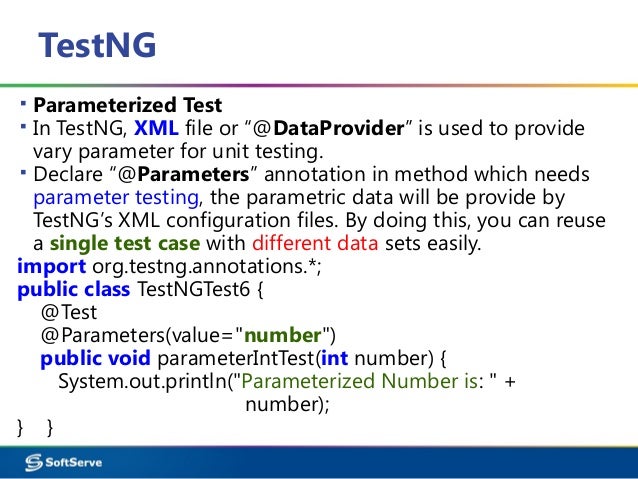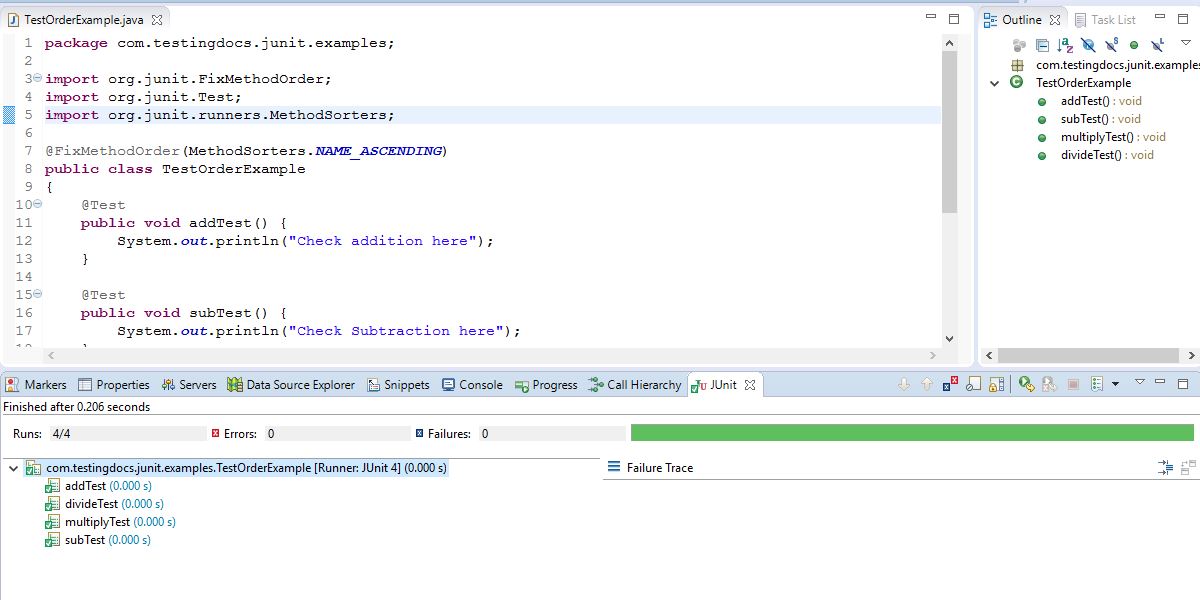

Junit vs testng annotations code#
It is an instance of the xUnit architecture for unit testing frameworks.Īllows testing code execution on the client, such as a web browser They share similar structure and functionality. Set of frameworks originating from SUnit (Smalltalk's testing framework). JUnit has been crucial in the development of test driven development and is partof the xUnit family of unit testing frameworks JUnit is useful for developers to write and run repeatable tests. JUnit is an open source Unit testing framework for java It's also designed to cover all categories of tests unit, functional, end-to-end, intergration. TestNG is similar to JUnit and NUnit but with newer functionalities such as: annotations, test that your code is multithread safe, flexible test configuration, support for data-driven testing (with support for parameters, powerful execution model (no more TestSuite) and more. TestNG is a testing framework for the Java programming language inspired by JUnit and NUnit The same method for TestNG has actual result as the first parameter, expected result as the second parameter then String as the last parameter.Unit Testing, Intergration Testing, End-to-End Testing For example, the assertEquals method for JUnit has a String as the first parameter followed by an expected result then an actual result. Their parameters are available in reverse order.


The main difference between JUnit’s class and TestNG’s class is the syntax. TestNG added the same class as JUnit to guarantee all assertions keep working if we migrate our test from JUnit to TestNG. TestNG turned around and added the same JUnit class,, to its distribution. JUnit has a class,, that has similar overloaded methods. It’s the same with JUnit assertions which have an assertion class located in TestNG’s distribution. Generally, all of these TestNG assertions have the same three parameters: actual result, expected result, and a String. assertEquals - verifies that two objects are equal.assertNotNull - verifies that an object is not null.assertNotSame - verifies that two objects do not refer to the same object.assertSame - verifies that two objects refer to the same object.assertFalse - verifies a condition is false.assertTrue - verifies a condition is true.

There are many assertions for TestNG but most of them are overloaded versions of the following methods: It’s a line of code that is placed in our test method to verify a condition. TestNG assertions verify if our test truly passed or failed. If I were to remove all code in the searchUser test method, then run it, this would still show as passing. While the console shows that the tests have passed,that's only because there was no error in our automation code. We have not verified our test script and are not sure if it truly passed or failed. Up to this point, what have we tested? We have automated opening Chrome and the application, signing into the application, searching for a user, signing out, closing chrome, and closing the application.


 0 kommentar(er)
0 kommentar(er)
